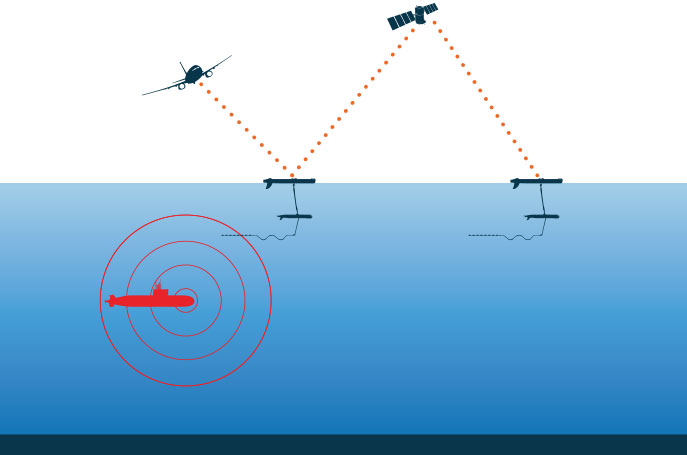U.S. defense contractor Boeing has unveiled the “most experienced unmanned surface vehicle on the planet” during annual Sea-Air-Space Exposition, the largest maritime exposition in the United States.
The new long-duration ocean robot, commonly known as Wave Glider, designed and manufactured by Liquid Robotics.
Boeing’s tweet said: “The Wave Glider is the most experienced unmanned surface vehicle on the planet.”
Operating at the surface, these autonomous surface vehicles provide the essential link between sea, air, and space. They expand how we collect metocean and marine data, bridging a data and access gap previously inaccessible, and can transform subsea sensors into real-time information sources.
Navies of the world face shrinking budgets, aging technology, and expanding threats from undersea. The Wave Glider platform is a persistent and highly durable unmanned surface vehicle that can host or tow a range of sensors, giving defense customers access to real-time maritime data.
Wave Gliders host payloads and tow sensors to provide undersea connectivity, addressing initial detection challenges and enabling tip and cue of aerial assets.
At the British Royal Navy’s Unmanned Warrior exercise, Liquid Robotics and Boeing used a network of persistent USVs to detect, report and track a live submarine.

Wave Gliders are low-observable, mobile platforms that enable over-the horizon surveillance with both surface and sub-surface payloads.
Radio waves don’t travel well underwater. And underwater acoustics require a relay at the surface. Wave Gliders also provide an essential link to connect seabed to space nearly anywhere in the ocean.
Powered by a wave and solar energy, the Wave Glider is an autonomous, unmanned surface vehicle (USV) that operates individually or in fleets delivering real-time data for up to a year with no fuel.
The #WaveGlider is the most experienced unmanned surface vehicle on the planet. #SAS2019
Learn about how it connects the seabed to space: https://t.co/Ty0qnFxLcv pic.twitter.com/zvfupSNrIR
— Boeing Defense (@BoeingDefense) May 6, 2019